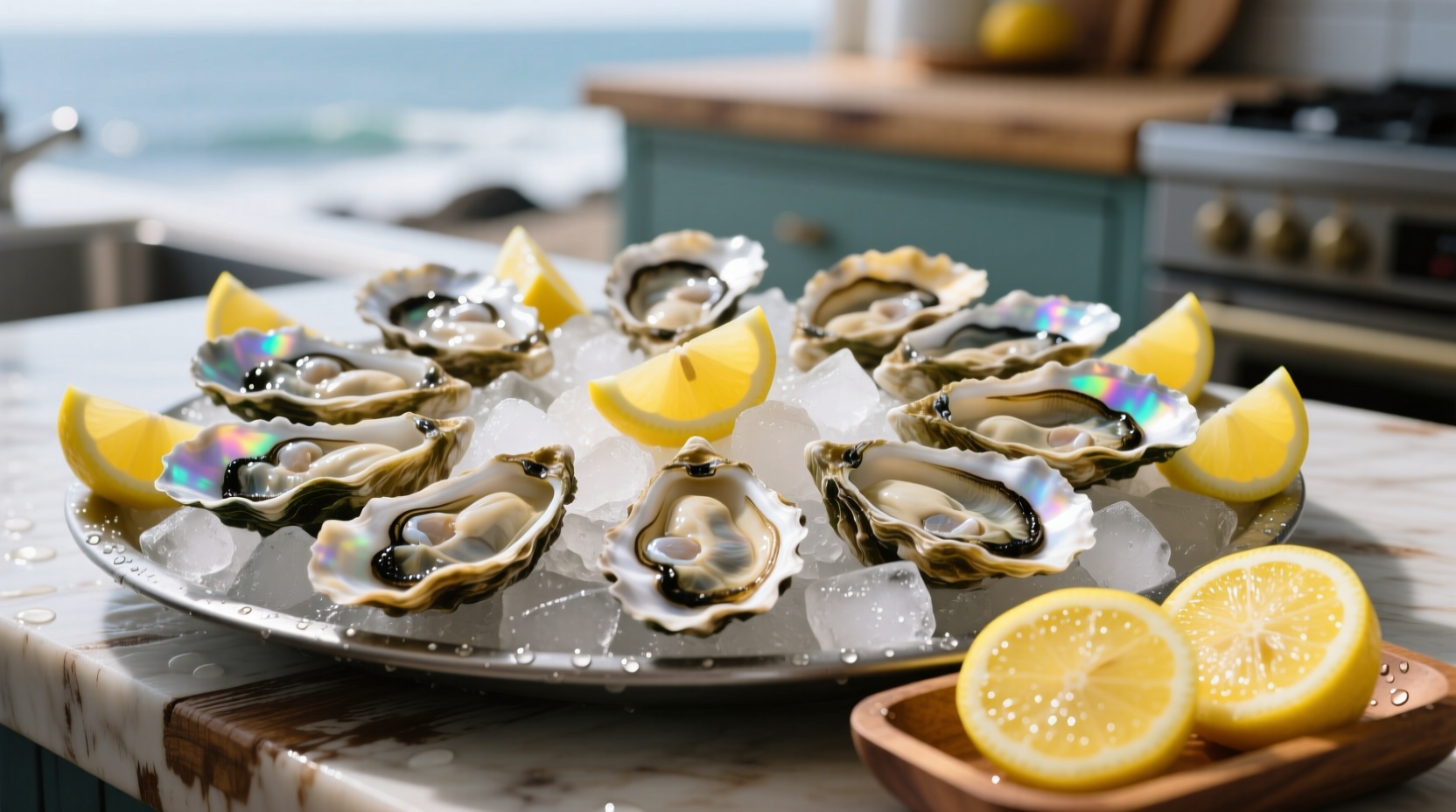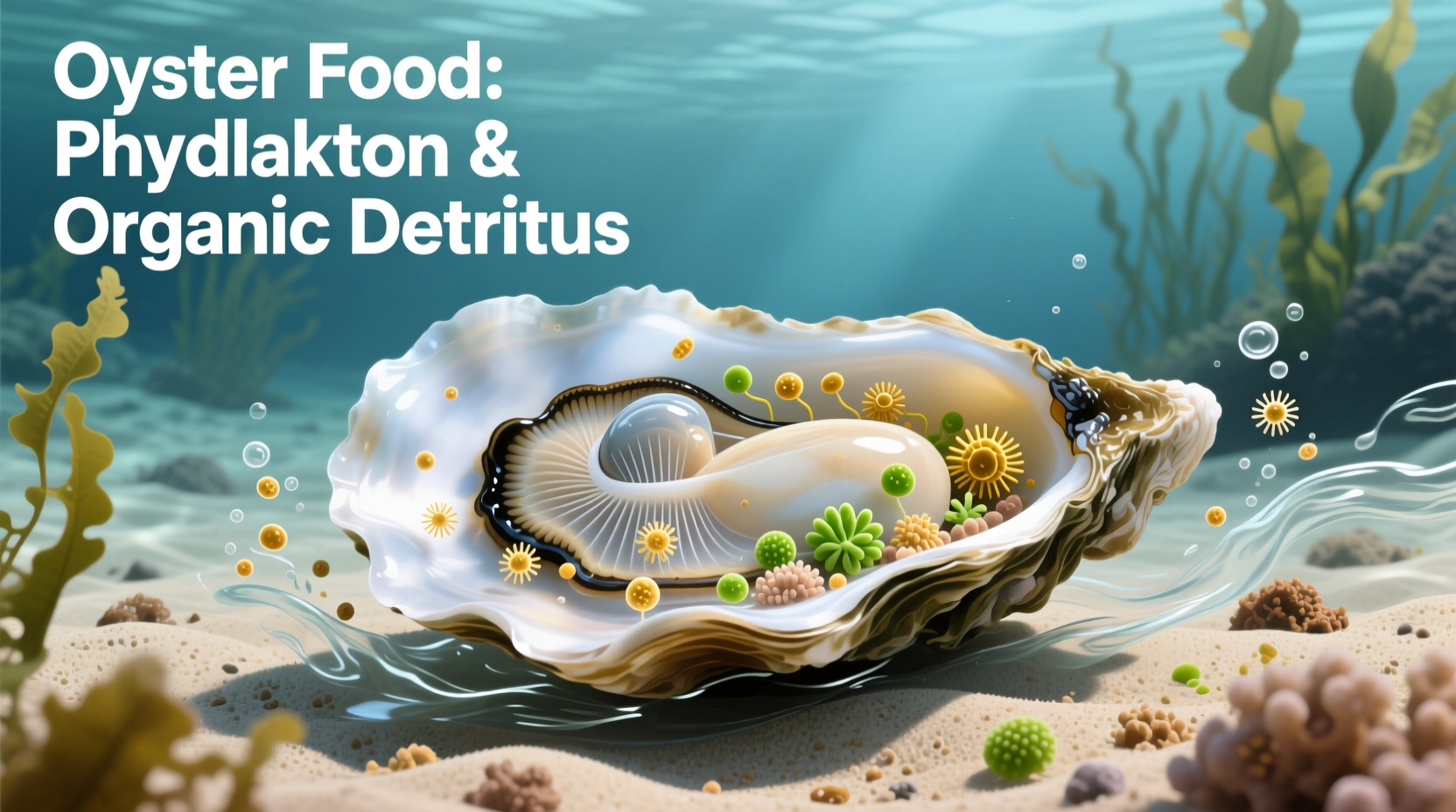If you're wondering what is oyster food, the answer is straightforward: oysters themselves are the food. The phrase "oyster food" is a common misunderstanding—oysters aren't a type of food given to oysters, but rather a celebrated seafood delicacy consumed by humans. Raw on the half shell, grilled, or fried, oysters offer a unique briny flavor and impressive nutritional profile that has made them a culinary staple for centuries.
Many people search for "what is oyster food" due to confusion about the terminology. Let's clarify this once and for all: oysters are food, not creatures that eat "oyster food." This misconception likely stems from how we discuss pet food (like "fish food"), but oysters are themselves a prized edible bivalve mollusk enjoyed worldwide.
Understanding the Terminology Confusion
When searching "what is oyster food," most users actually want to know about oysters as a food source. Unlike "fish food" (which refers to nourishment for aquarium fish), oysters are the consumable item. This linguistic mix-up is common among culinary novices exploring seafood options. Oysters have been harvested for human consumption since ancient times, with archaeological evidence showing oyster shells in Roman and Native American settlements.
| Term | Actual Meaning | Common Misconception |
|---|---|---|
| Oyster food | Not a standard culinary term | Food specifically for oysters |
| Oysters | Edible bivalve mollusks | Requires special "oyster food" |
| Oyster farming | Cultivation of oysters for human consumption | Oysters being fed special food |
What Exactly Are Oysters?
Oysters (family Ostreidae) are saltwater bivalve mollusks found in oceans worldwide. They filter feed on plankton and algae, which contributes to their distinctive flavor profile influenced by their specific growing environment—a concept known as merroir, similar to terroir in wine. The most commonly consumed varieties include:
- Eastern oysters (Crassostrea virginica): Found along North America's Atlantic coast
- Pacific oysters (Crassostrea gigas): Predominant in the Pacific Northwest and Asia
- European flat oysters (Ostrea edulis): Prized in European cuisine
According to NOAA's National Ocean Service, oysters play a crucial ecological role by filtering water and creating reef habitats. Their ability to filter up to 50 gallons of water daily makes them nature's water purifiers, though this also means their quality directly reflects their growing environment.
Nutritional Powerhouse on the Half Shell
Oysters aren't just delicious—they're nutritional powerhouses. A standard 3-ounce serving of raw oysters provides remarkable health benefits that make them one of nature's most complete foods. The USDA FoodData Central database confirms oysters are exceptionally rich in essential nutrients:
| Nutrient | Amount per 3 oz | % Daily Value | Key Health Benefits |
|---|---|---|---|
| Zinc | 593% DV | 593% | Immune function, wound healing, DNA synthesis |
| Vitamin B12 | 324% DV | 324% | Nerve function, red blood cell formation |
| Copper | 223% DV | 223% | Iron metabolism, connective tissue formation |
| Protein | 10g | 20% | Muscle maintenance, enzyme production |
| Omega-3 Fatty Acids | 565mg | 36% | Heart health, brain function, inflammation reduction |
This impressive nutritional profile explains why many cultures have historically considered oysters an aphrodisiac and vitality booster. Their high zinc content directly supports testosterone production and reproductive health, while the combination of protein and healthy fats makes them remarkably satisfying despite being low in calories.

Safety Considerations for Oyster Consumption
While oysters offer numerous benefits, understanding proper handling and consumption practices is essential for safety. The FDA provides specific guidelines for safe oyster consumption, particularly regarding raw preparation:
- Seasonal considerations: While the "R" rule (only eat oysters in months with R) is largely outdated due to modern farming, wild oysters may still spawn in warmer months, affecting texture and flavor
- Source verification: Always purchase from reputable dealers who maintain proper cold chain storage (below 40°F/4°C)
- Vulnerable populations: The FDA recommends that pregnant women, immunocompromised individuals, and elderly consumers avoid raw oysters due to potential Vibrio bacteria
- Freshness indicators: Live oysters should be tightly closed or close when tapped; discard any with cracked shells or unpleasant odors
According to data from the Centers for Disease Control and Prevention, properly handled and prepared oysters present minimal risk, with most foodborne illness cases associated with improper storage or consumption of visibly spoiled product.
How to Enjoy Oysters: A Practical Guide
Whether you're new to oysters or looking to expand your appreciation, understanding preparation methods enhances your experience. Here's how to navigate the world of oyster consumption:
Raw Oyster Basics
Serving oysters raw on the half shell preserves their delicate flavor and texture. Key elements include:
- Shucking technique: Use a specialized oyster knife with a protective glove
- Traditional accompaniments: Lemon wedges, mignonette sauce, or hot sauce complement without overwhelming
- Proper tasting: Slide the oyster off the shell, chew once or twice to experience the full flavor profile
Cooked Preparation Methods
For those hesitant about raw consumption, cooking methods make oysters accessible while showcasing their versatility:
- Grilled: Top with butter, garlic, and herbs for a smoky preparation
- Fried: Classic preparation creating a crispy exterior with tender interior
- Steamed: Gentle cooking method preserving delicate texture
- Oyster stew: Comforting preparation highlighting their natural brininess
Regional Serving Traditions
Different cultures have developed unique approaches to serving oysters:
- France: Served with shallot vinegar mignonette
- Mexico: Often with lime and chili powder
- Japan: Sometimes with ponzu sauce or as part of sushi
- United States: Regional variations from East Coast raw bars to Southern fried preparations
Environmental Impact and Sustainable Choices
Modern oyster farming represents one of seafood's most sustainable practices. Unlike many forms of aquaculture, oyster farming requires no feed input (they filter naturally occurring plankton), improves water quality, and creates habitat for other marine species. The Monterey Bay Aquarium's Seafood Watch program consistently rates farmed oysters as a "Best Choice" due to their minimal environmental impact.
When selecting oysters, look for certifications like the Aquaculture Stewardship Council (ASC) label, which verifies responsible farming practices. Wild-caught oysters should come from fisheries managed under strict quotas to prevent overharvesting of natural beds.
Getting Started with Oysters
If you're new to oysters, start with these practical steps:
- Visit a reputable seafood restaurant with a visible oyster bar
- Ask about the oyster's origin and flavor profile
- Begin with milder varieties like Kumamotos before trying more briny types
- Try one raw preparation and one cooked option to experience the range
- Pay attention to the texture and flavor notes rather than expecting a uniform taste
Remember that oyster appreciation develops over time—what might seem challenging at first often becomes a cherished culinary experience. The journey from "what is oyster food" to becoming an oyster enthusiast is one of the most rewarding paths in culinary exploration.











 浙公网安备
33010002000092号
浙公网安备
33010002000092号 浙B2-20120091-4
浙B2-20120091-4